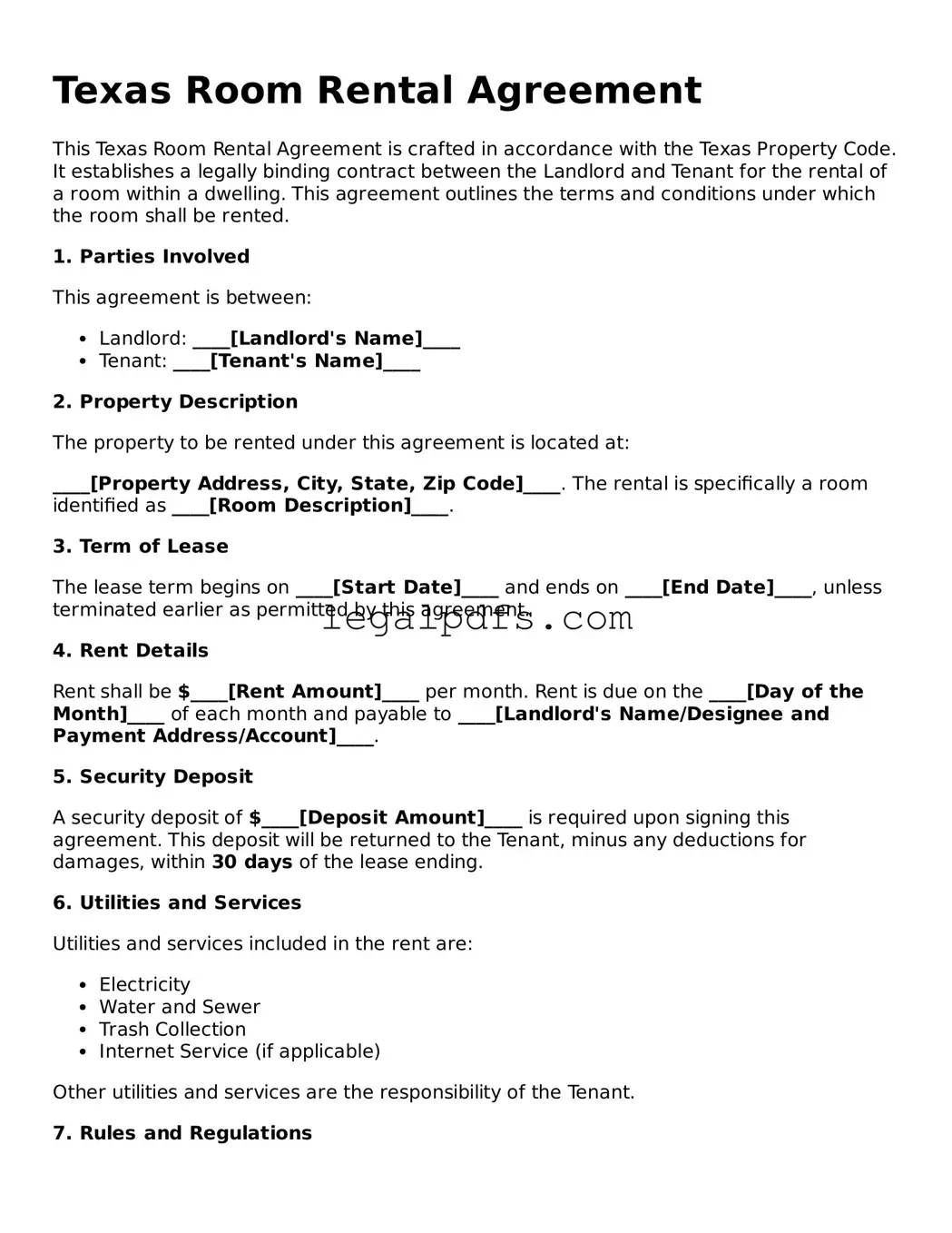Texas Room Rental Agreement
This Texas Room Rental Agreement is crafted in accordance with the Texas Property Code. It establishes a legally binding contract between the Landlord and Tenant for the rental of a room within a dwelling. This agreement outlines the terms and conditions under which the room shall be rented.
1. Parties Involved
This agreement is between:
- Landlord: ____[Landlord's Name]____
- Tenant: ____[Tenant's Name]____
2. Property Description
The property to be rented under this agreement is located at:
____[Property Address, City, State, Zip Code]____. The rental is specifically a room identified as ____[Room Description]____.
3. Term of Lease
The lease term begins on ____[Start Date]____ and ends on ____[End Date]____, unless terminated earlier as permitted by this agreement.
4. Rent Details
Rent shall be $____[Rent Amount]____ per month. Rent is due on the ____[Day of the Month]____ of each month and payable to ____[Landlord's Name/Designee and Payment Address/Account]____.
5. Security Deposit
A security deposit of $____[Deposit Amount]____ is required upon signing this agreement. This deposit will be returned to the Tenant, minus any deductions for damages, within 30 days of the lease ending.
6. Utilities and Services
Utilities and services included in the rent are:
- Electricity
- Water and Sewer
- Trash Collection
- Internet Service (if applicable)
Other utilities and services are the responsibility of the Tenant.
7. Rules and Regulations
The Tenant agrees to abide by all rules and regulations set forth by the Landlord and applicable to the property and common areas. These include, but are not limited to:
- Keeping noise levels to a respectful volume.
- Maintaining cleanliness of common areas.
- Prohibiting illegal activity on the premises.
8. Governing Law
This agreement shall be governed by and construed in accordance with the laws of the State of Texas.
9. Signatures
This agreement is signed on ________[Date]________. By signing, both parties agree to the terms and conditions outlined in this agreement.
Landlord's Signature: _________________________________
Tenant's Signature: _________________________________
